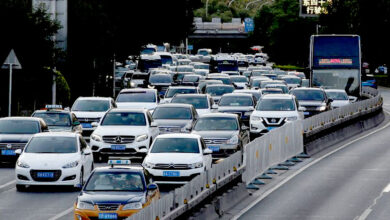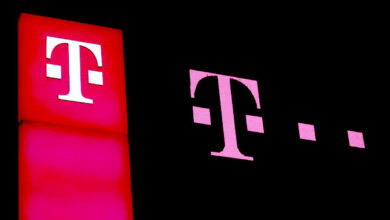The robot that Tesla built makes waves but can’t walk yet. Musk wants to sell a lot of them.

Elon Musk, the CEO of Tesla, showed off a prototype of the company’s humanoid robot “Optimus” on Friday. He said that the company would be able to make millions of them and sell them for less than $20,000, which is less than a third of the price of a Model Y.
Musk said he thought Tesla (NASDAQ:TSLA) would be ready to take orders for the robot in three to five years. He also talked about how it would take a decade or more to develop the product, which is the most detailed plan he has given so far for a business he has said could be bigger than Tesla’s EV sales.
Tesla is different from other companies that have tried to make humanoid robots because it wants to design and build robots for the mass market. These robots would be tested by doing jobs in the factories.
Musk has said that showing off prototype robots at Tesla’s office in Palo Alto, California, was part of an effort to make Tesla known as a leader in fields like artificial intelligence, not just as a company that makes “cool cars.”
Friday, a test robot that Tesla said was made in February walked out to wave at the crowd, and Tesla showed a video of it doing simple tasks like watering plants, carrying boxes, and lifting metal bars at a production station at the company’s California plant.
Related: Twitter will talk to Elon Musk, who is known for giving fiery testimony.
But the current one, which Musk said was closer to production, had to be rolled out on a platform and did a slow wave to the crowd.Musk named it Optimus and said that in a few weeks, it would be able to walk.
“There’s still a lot of work to be done to improve and prove Optimus,” Musk said. “I think Optimus will be amazing in five or ten years, like mind-blowing.”
He said that humanoid robots that are already made “don’t have a brain” and can’t solve problems on their own. He said that Optimus, on the other hand, would be a “very capable robot” that Tesla would try to make in the millions.
Other automakers, like Toyota Motor (NYSE:TM) and Honda Motor, have made prototypes of humanoid robots that can do complicated things like shoot a basketball, and production robots from ABB and other companies are an important part of making cars.
But Tesla is the only company promoting the idea of a mass-market robot that could also be used in factories.
The next-generation Tesla bot will have Tesla-made parts, such as a 2.3-kWh battery pack in its torso, a chip system, and actuators that move its limbs. The robot is meant to be 73 kg.
Tesla engineers, who were all wearing black T-shirts with a picture of metal robot hands making a heart shape like Musk, talked about how they made the robot’s features, like how the fingers move, with a focus on lowering the cost of production.
Musk said, “We are trying to find the fastest way to a useful robot that can be made in large numbers.”
Musk said that by starting a business in robotics, Tesla is changing the terms of its well-known mission statement, which says that the company wants to “accelerate the world’s transition to sustainable energy.” This is a part of the company’s appeal to investors and climate activists.
Musk said, “Optimus is not directly related to speeding up the use of sustainable energy.” “I think the mission has changed a little bit with the arrival of Optimus to, I don’t know, making the future awesome.”
MIXED REVIEWS
Musk said that the purpose of the event was to find new employees, and the engineers on stage spoke to a technical crowd. They talked about how Tesla made robot hands and how he used crash simulators to make sure the robot could fall on its face without breaking.
Musk, who has talked in the past about the dangers of artificial intelligence, said that putting robots in every home could “transform civilization” and lead to “a future with no poverty and plenty of food.” But he said he thought it was important for Tesla shareholders to have a say in the company’s plans.
Musk said, “You can fire me if I go crazy.” “This is essential.”
Many responses on Twitter (NYSE:TWTR) were positive and focused on how fast Tesla has been developing the car since August of last year, when it announced the project by having a person in a white suit act like a humanoid robot.
Henri Ben Amor, a professor of robotics at Arizona State University, said Musk’s price goal of $20,000 was “a good idea,” since humanoid robots currently cost about $100,000.
Related: Twitter will get rid of Elon Musk before the trial for the buyout deal.
“There’s a difference between what they said they wanted to do and what they actually did,” he said. “There is still a lot of work to do in terms of dexterity, speed, being able to walk steadily, and so on.”
Aaron Johnson, a professor of mechanical engineering at Carnegie Mellon University, agreed that the robot wasn’t necessary.
“What’s really impressive is how quickly they got to that level. Johnson is unsure why they would produce millions of these.
At the event, Tesla also talked about its long-awaited self-driving technology. Engineers who worked on the software for self-driving cars talked about how they taught the software to make decisions, such as when to merge into traffic, and how they sped up the computer’s ability to do so.
Musk said in May that the most valuable car company in the world would be “worth basically zero” if it didn’t have fully self-driving cars. The company also faces growing regulatory probes and technological problems.
Musk said on Friday that beta testing of Tesla’s fully self-driving cars will be “technically” ready by the end of 2022, but regulations will be a problem.





